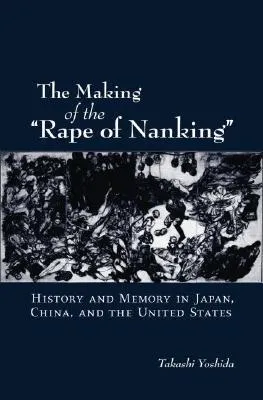The Making of the Rape of Nanking: History and Memory in Japan, China, and the United States
By (author): "Takashi Yoshida"
Publish Date:
February 24th 2006
ISBN0195180968
ISBN139780195180961
AsinThe Making of the Rape of Nanking: History and Memory in Japan, China, and the United States
Original titleThe Making of the "Rape of Nanking": History and Memory in Japan, China, and the United States (Studies of the Weatherhead East Asian Instit
On December 13, 1937, the Japanese army attacked and captured the Chinese capital city of Nanjing, planting the rising-sun flag atop the city's outer walls. What occurred in the ensuing weeks and months has been the source of a tempestuous debate ever since.It is well known that the Japanese military committed wholesale atrocities after the fall of the city, massacring large numbers of Chinese during the both the Battle of Nanjing and in its aftermath. Yet the exact details of the war crimes--how many people were killed during the battle? How many after? How many women were raped? Were prisoners executed? How unspeakable were the acts committed?--are the source of controversy among Japanese, Chinese, and American historians to this day.In The Making of the "Rape of Nanking" Takashi Yoshida examines how views of the Nanjing Massacre have evolved in history writing and public memory in Japan, China, and the United States. For these nations, the question of how to treat the legacy of Nanjing--whether to deplore it, sanitize it, rationalize it, or even ignore it--has aroused passions revolving around ethics, nationality, and historical identity. Drawing on a rich analysis of Chinese, Japanese, and American history textbooks and newspapers, Yoshida traces the evolving--and often conflicting--understandings of the Nanjing Massacre, revealing how changing social and political environments have influenced the debate. Yoshida suggests that, from the 1970s on, the dispute over Nanjing has become more lively, more globalized, and immeasurably more intense, due in part to Japanese revisionist history and a renewed emphasis on patriotic education in China.While today it is easy to assume that the Nanjing Massacre has always been viewed as an emblem of Japan's wartime aggression in China, the image of the "Rape of Nanking" is a much more recent icon in public consciousness. Takashi Yoshida analyzes the process by which the Nanjing Massacre has become an international symbol, and provides a fair and respectful treatment of the politically charged and controversial debate over its history.
